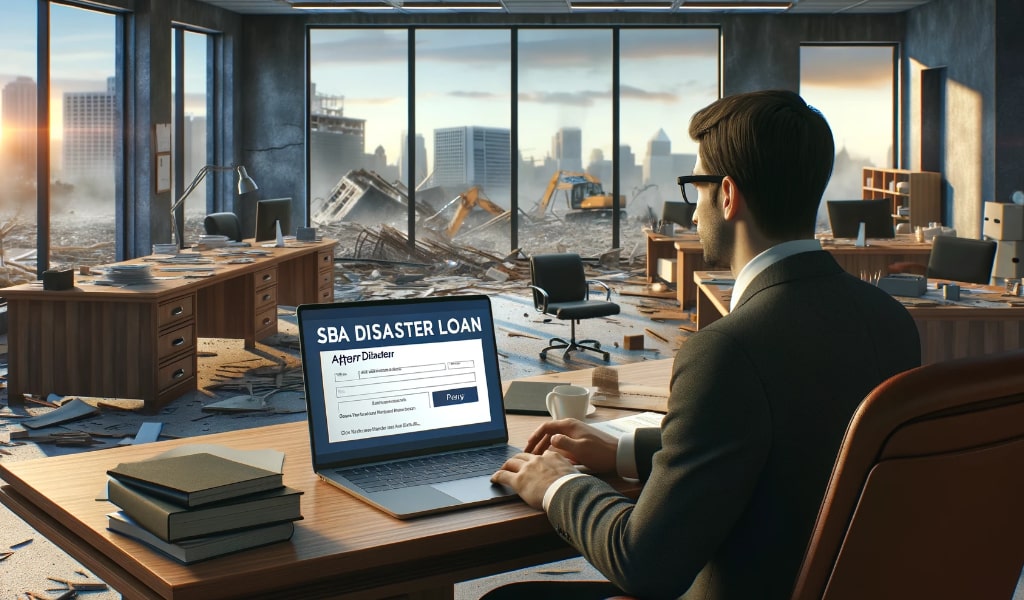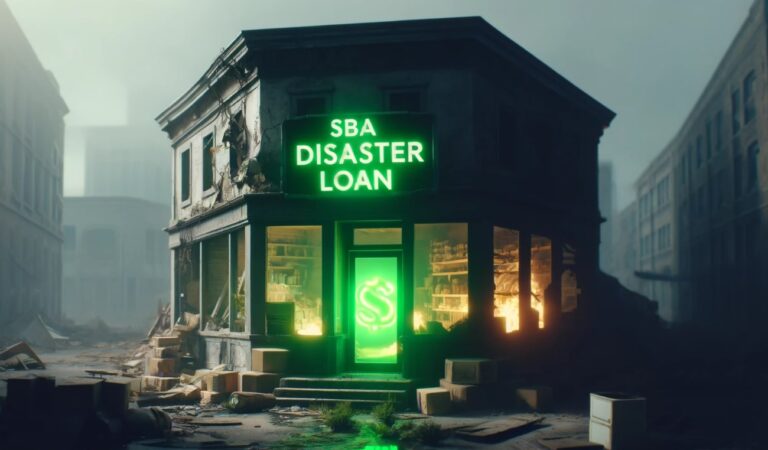The loss of revenue that disasters bring can be enough to put a small company out of business. An SBA disaster loan might be an excellent option for receiving affordable and long-term financing if your company has been impacted by a disaster that disrupted your cash flow.
The Small Business Administration (SBA) offers small business loans to those affected by conditions recognized as disasters by the SBA. Such conditions may include storm-related damage, evacuations, business closures, or the COVID-19 pandemic.
Here, let’s explore what an SBA Disaster loan is and how it works.
What is an SBA disaster Loan, and How Does it Work?
A disaster loan is simply a form of loan given to those who have been financially harmed due to disasters that have impacted a state’s economy. It’s a form of loan that provides a low-interest loan to small businesses in desperate need to help them stay open and keep their property and other assets.
Maintaining operations during the coronavirus outbreak, for example, is likely to have necessitated cost-cutting and financial devastation. Many people have lost their jobs due to company closures and other circumstances.

Fortunately, the SBA has created a separate COVID-19 Disaster Loan with lower qualifying standards and a speedier application process, making more funds available to more firms.
The Coronavirus Relief Act added $20 billion to SBA Economic Injury Disaster Loans(EIDL) and Grants for businesses in low-income communities that have experienced economic hardship due to the pandemic.
What can you use an SBA Disaster Loan for?
It is possible to use SBA Disaster and SBA Express loans to fix or replace items that have been destroyed as a result of a disaster. Real estate, personal property, machinery and equipment, inventory, and business assets are all examples of this.
Also, an SBA disaster loan can be used for the following things:
- Invoices that have not been paid
- Adaptations in the workplace
- Debts that are fixed
- Paychecks for employees
- Pay Bills
An SBA disaster loan for coronavirus, for example, is used to pay expenditures and damages that would not have occurred if the disaster had not occurred.
Four Types of Disaster Loans
Physical damage loans
A physical damage loan helps to cover the cost of repairing and replacing physical assets that have been damaged as a result of a declared disaster.
Economic Injury Disaster Loans
It protects you from the immediate economic damage caused by the disaster and allows you to keep a reasonable working capital position throughout that time.
Military reservist loan
This sort of loan is for active-duty military individuals who require cash for their small businesses to cover regular and necessary operating costs while on active service.
These loans are only meant to pay the costs of satisfying the company’s critical obligations. This loan is due immediately after the military personnel is discharged from active duty.
Mitigation assistance
After a major disaster, this cash is used to help with long-term hazard mitigation. Also, during the immediate aftermath of a disaster, this loan promotes reducing and removing dangers.
Who Can Use an SBA Disaster Loan?
You can qualify for SBA loans if you operate a small business or run a nonprofit organization of any size. Or if you own a U.S. agricultural firm with 500 or fewer employees that has sustained significant economic damage due to a disaster.
The Small Business Administration (SBA) provides low-interest loans to businesses, nonprofit organizations, homeowners, and renters in certain areas.
How to qualify for an SBA Disaster loan?
To be eligible for an SBA disaster loan, you must meet the following criteria:
- Placement: To be eligible for an SBA loan, you must be a business owner in a disaster-affected area.
- Credit rating: Your credit score must meet the SBA loan minimum credit standards, ranging from 620 to 640.
- Credible Collateral: If you need an SBA disaster loan for more than $20,000-25,000, the lender will almost certainly require some collateral to complete the loan procedure.
- Ability to repay the loan: Here, the lender examines your ability to repay the loan in full when the time is up. For firms afflicted by a coronavirus, this will most likely be handled on a case-by-case basis.
Other information and documents needed to secure an SBA Disaster Loan:
You must provide the following information to the SBA to obtain a disaster loan:
- Information about yourself and your contacts.
- Cash, retirement savings, and other current assets.
- Information on employment and salary.
- Your address and insurance details.
- Mortgages, credit cards, debit cards, and installment loans records.
- Delinquencies, litigation, and criminal records information.
- An employer identification number and business address.
- Business insurance details (corporation, partnership, etc.) and the type of organization.
- Business owners’ personal and contact information, personal financial statements, and a calendar of obligations and debts.
- Returns on company taxes filed recently.
- Profit and loss statements, monthly sales data, and balance sheets are examples of current financial statements.
Benefits of SBA disaster Loan
In general, SBA disaster loans will provide you with the greatest rates, terms, and financing options. Disaster loans from the Small Business Administration can help you pay for almost everything you need after a disaster.
The Small Business Administration (SBA) can give homeowners up to $200,000 to repair or rebuild their primary dwelling places. This loan has a maximum loan amount of $2,000,000 and can be repaid over 30 years.
Bottom-Line
Before applying, read SBA disaster loan reviews to see if it’s the best financial option for you. Unlike other small company loans, SBA disaster loans are more challenging to get.
The application process can be demanding and competitive, but you will be successful if you follow the necessary rules.


